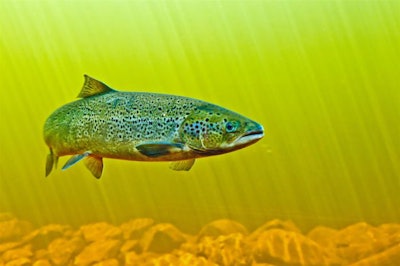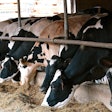
As viability of fishmeal alternatives grows, fish-free aquafeed innovators look for greater challenge
With fish-free and low-fishmeal aquafeed increasingly common for species such as tilapia and carp, the F3 Future of Fish Feed Challenge is leveling up this year and narrowing its focus to carnivorous species that traditionally consume far more fishmeal.
The next round of the F3 Challenge, set to begin this summer, will offer cash prizes to the contestant that sells the greatest amount of fish-free feed in three categories — salmonid, shrimp and other carnivorous species.
In years past, the contest has focused primarily on promoting innovation, and the production of nutritionally adequate replacements for both fish meal and fish oil. But as past winners such as Veramaris have gone on to lead the commercial production of fish-free products, F3 has begun to evaluate new areas in need of leadership.
For some species, subbing fishmeal or fish oil for non-marine ingredients is much easier than in other species, according to Michael Tlusty, an associate professor of sustainability and food solutions at the University of Massachusetts at Boston, and also a judge for the F3 Challenge. In omnivorous species such as tilapia, fishmeal and fish oil inclusion rates are already as low as 2%.
F3 has also received criticism that its past contests were overly reliant on omnivorous species — previous victors focused on diets mostly for tilapia and carp — Tlusty said.
Carnivorous fish such as salmon are much more reliant on marine ingredients, with fishmeal and oil still accounting for 25-35% of their diets, according to Tlusty. The challenge, Tlusty said, is producing an alternative ingredient at the scale required to meet this demand.
“The thing that’s really going to make the diet successful is doing this at scale,” he said. “And really when I say scale, it’s getting enough biomass to work with at an affordable price.”
But there are other challenges involved in crafting a carnivorous diet as well. The feed not only needs to include the right balance of nutrients, but it must also appeal to fish that typically only consume other fish. Yet recent research suggests poor palatability in the most common alternative — algae-based diets — leads to lower feed intake and slower growth in carnivores.
“You have to test that it’s palatable, you have to test that the fish grow well — you have to do all these tests, and you have to make sure the economics work out,” Tlusty said. So while the challenge’s criteria remain the same for the upcoming F3 carnivore round, contestants will face a new set of challenges.
Even the little details will matter, he said, recalling his work for a company that tried to develop an alternative shrimp diet.
“We had issues where the diet was floating and wasn’t sinking, and shrimp don’t like diets that float,” he said. “There are always these little hiccups that you have to go through.”
But Tlusty believes possibilities are out there: Researchers, and even past contestants, are already raising carnivorous species on a totally plant-based diet.
“It’s just getting it into the market and getting everybody to ask for that product,” he said.
Registration for the upcoming contest is open until April 30. In the meanwhile, F3 is hosting a series of webinars for would-be contestants on March 30-31.










